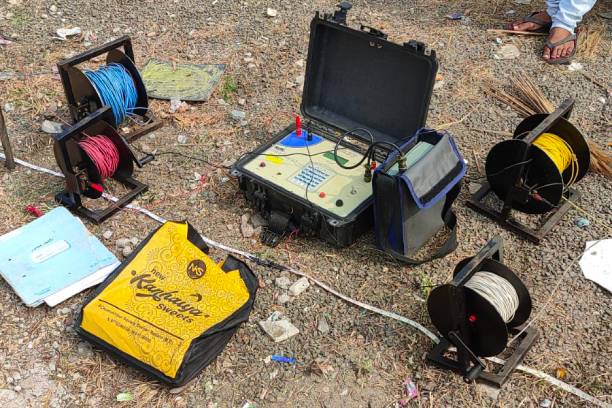Get Free Expert Assistance

Role of GIS and Remote Sensing in Water Resource Management
Water is one of Earth’s most vital resources. Managing it properly is not just essential for survival but also critical for sustainable development. Enter Geographic Information Systems (GIS) and Remote Sensing – two groundbreaking technologies revolutionizing how we manage and conserve water resources today.
These sophisticated technologies help experts make informed decisions by providing detailed data, better analysis, and real-time visuals. Let’s dive into how GIS and Remote Sensing play crucial roles in water resource management.
What is GIS in Water Resource Management?
GIS is a computer-based tool that captures, stores, analyzes, and visualizes spatial and geographical data. It offers a full picture of how water interacts with its surroundings. This makes it easier for scientists, planners, and conservationists to understand, predict, and solve water-related challenges.
GIS maps water systems and collects vital data on water distribution, usage, and quality. It integrates data from multiple sources, making decision-making smarter and more effective.
Remote Sensing: A Bird’s Eye View
Remote sensing uses satellites, drones, and aircraft to monitor and gather information about Earth's surface. It is especially useful for tracking real-time changes in water levels, quality, and availability.
For example, satellite imagery pinpoints water usage in agriculture or spots drought-affected areas. This high-tech method allows for non-intrusive and scalable monitoring, critical for managing vast water catchments.
How Do GIS and Remote Sensing Work Together?
When GIS’s mapping capabilities combine with the insights gathered via Remote Sensing, the results are groundbreaking. Here's how they complement each other:
1. Data Collection
Remote sensing collects data across large areas, like watersheds and flood plains. GIS processes and combines this data with other metrics, enabling a comprehensive analysis.
2. Disaster Management
Flood risks, drought predictions, and water contamination events can be better managed by combining remote-sensed data with GIS insights. By modeling scenarios, authorities can plan responses efficiently.
3. Monitoring Changes
Both technologies keep tabs on seasonal changes in water resources such as receding water bodies or melting glaciers. This helps in long-term resource planning.
Applications of GIS and Remote Sensing in Water Management
These technologies are being used in exciting ways. Let's break it down:
1. Hydrological Modeling
Through GIS, experts analyze the flow, distribution, and quality of water. Remote sensing data feeds into these models to improve their accuracy.
2. Flood Risk Mapping
GIS creates visual maps demonstrating regions prone to flood risks. Remote sensing provides real-time satellite imagery, showing flood progression as it happens.
3. Groundwater Monitoring
Remote sensing helps locate underground water reservoirs. GIS maps layer this data to show areas at risk of overuse or contamination.
4. Agricultural Water Use
By identifying irrigation patterns through imagery, remote sensing determines where excessive water is being consumed. GIS solutions then aid in optimizing water use for better yields.
5. Water Quality Assessment
GIS and remote sensing combine to monitor water contamination. They track pollutants in surface water and detect harmful biological or chemical changes.
6. Urban Water Management
Urban areas often deal with broken pipes, water waste, or contamination. GIS maps utility networks, while remote sensing identifies weak or damaged zones for timely repairs.
Case Study - Success in Uzbekistan
In Uzbekistan’s Chirchiq, GIS and IoT tools helped monitor water resources more effectively during a system upgrade. Using Nobel Systems' GeoViewer, GIS paired with remote sensors to provide real-time data on water pressure and flow. It not only reduced water wastage but also forecasted future demands.
Benefits of Using GIS and Remote Sensing in Water Management
1. Precision and Accuracy
Real-time data ensures water resources are better monitored and managed.
2. Cost Savings
Automation reduces manual labor costs and minimizes errors, letting organizations allocate funds more effectively.
3. Sustainability
By optimizing water use, GIS and remote sensing help ensure resources last for future generations.
4. Disaster Preparedness
They prevent water crises by predicting floods, droughts, and contamination events, giving authorities a chance to act early.
Challenges in Implementation
While GIS and remote sensing are phenomenal tools, they do come with challenges:
High Costs
Developing systems like GeoViewer or installing IoT sensors requires significant funding. However, costs are dropping as tech improves.
Technical Expertise
Advanced skills are needed for data interpretation, making training an essential part of implementation.
Data Accuracy
Inaccurate data sources can lead to flawed decisions. Ensuring top-notch data management is critical.
What’s Next? Future of GIS and Remote Sensing
The future of GIS and remote sensing lies in advancements like Artificial Intelligence (AI) and predictive modeling. With machine learning, these tools can provide even better forecasts for water-related challenges.
Additionally, the push for sustainability will see GIS and remote sensing becoming essential in global water management policies.
FAQs
Q: Why is water resource management important?
A: Effective management ensures water availability for drinking, agriculture, and industry while fostering sustainability for future generations.
Q: How does GIS help with water quality monitoring?
A: GIS combines data from sites like rivers or wastewater plants to create maps showing contamination levels and sources.
Q: Can remote sensing predict floods?
A: Yes, remote sensing tracks rainfall patterns and rising water levels, enabling early flood warnings.
Q: What is a digital twin in water management?
A: It’s a virtual model of water systems. With GIS and IoT integration, it helps predict system failures or optimize water flow.
Q: What industries benefit the most from GIS and remote sensing applications?
A: Agriculture, urban planning, disaster management, and environmental conservation benefit greatly.
Q: Are these technologies costly?
A: Initial costs can be high, but they lead to long-term savings and higher efficiency.
Conclusion
Using GIS and remote sensing in water resource management is not optional anymore – it’s a necessity. These technologies ensure that every drop of water is managed wisely, paving the way for a sustainable tomorrow. As they evolve, their role in conserving this critical resource will only grow stronger.
